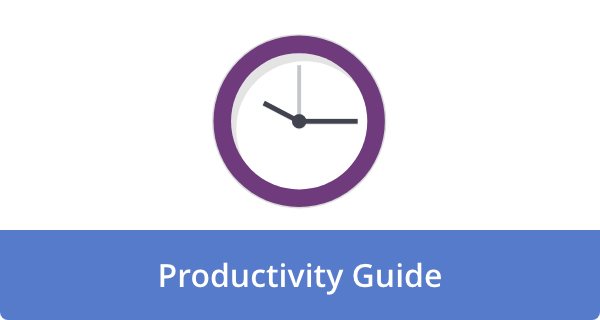

We generally treat time like a runaway train that is never far behind us, always slipping away. We never seem to catch up as we chase time with to-do lists, calendar alerts, and multitasking hacks.
The truth is, you don’t have to catch up with time. Instead, your relationship with it needs to be designed. It’s not speed that makes an organization efficient; it’s structure. Like an architect doesn’t pile bricks and hope a house will appear, you can’t pile tasks and expect to be productive. A blueprint is necessary.
This post will explore how to stop chasing time and start designing it through intentional systems, boundaries, and mindset changes.
Recognizing Time as a Design Imperative
Start thinking of time as a material to be skillfully shaped, not as an abstract concept. In the same way that physical space has form and function, time also does. Similarly to building blocks, each hour before you contributes to the structure you are constructing. Rather than simply a list of appointments, your calendar dictates the flow and purpose of your day. When this crucial framework is not designed intentionally, it will become a chaotic jumble, inefficient in layout, and reactive to external pressures rather than serving your core goals.
As part of this design process, ask yourself a fundamental, often overlooked question: What does my day mean to me? Is there any feeling I aspire to cultivate?
In the same way, a truly efficient life balances ambitious pursuits with unwavering well-being, exceptional architectural design combines aesthetic appeal with practical usability. Maintaining this crucial balance doesn’t come from constantly striving for more within the same timeframe; rather, it comes from focusing on impact, quality, and mindful engagement.
Constructing Your Time Architecture: The Essential Framework
When you design your time intentionally, you must include the following three structural elements;
A firm foundation (the unshakeable pillars).
Consider your non-negotiables as the load-bearing walls of your time architecture — essential elements that support, stabilize, and ensure the structural integrity. You cannot compromise these commitments, such as sleep, exercise, family time, and focused work blocks aligned with your highest priorities. Instead of pushing these activities to the margins of your day, build your schedule around them, recognizing their fundamental importance.
It is best to schedule these in your calendar first. You can do this by literally blocking out the meeting on your calendar in advance, treating it with the same level of commitment as a crucial client meeting. If you do not establish this solid foundation, then every other aspect of your time management becomes reactive, susceptible to the whims of others.
A modular block system (adaptable spaces).
Some tasks and activities don’t require the rigidity of a fixed schedule. You can strategically deploy shallower tasks, necessary errands, administrative duties, or bursts of creative exploration using modular blocks of time. Think of them as the open-concept spaces within a house where different purposes can be served according to the demands of the day.
Allocate 1–2 hours of modular time every day within your daily schedule. By doing so, you will benefit from essential breathing space and be able to pivot more easily when life’s inevitable shifts and unexpected demands occur.
Buffer zones (spaces for resilience).
As an architect, you would never design a building with zero clearance between its walls, since structural integrity and flexibility are indispensable. Despite this, we often schedule our days for precisely zero buffer time between meetings, tasks, or transitions. This escalates decision fatigue, heightened stress levels, and a pervasive sense of rushed, less effective work.
Make sure there are buffer zones of 10–15 minutes between scheduled meetings and significant tasks. During this brief interlude, you can mentally reset, prepare for the next activity, or take a deep breath. Additionally, schedule a longer buffer period each day (30–60 minutes) to accommodate unexpected overflows, take restorative breaks, or catch up on urgent matters without causing a significant interruption.
The Proactive Blueprint: Shifting from Reaction to Intentionality
In reactive time management, leaks are patched in a dam already on the verge of collapse, a desperate attempt to contain a problem that could have been prevented. As opposed to reactive design, proactive design establishes robust systems and cultivates a mindset of intentionality to prevent leaks from developing.
The following are three fundamental proactive mindset shifts you should integrate into your approach to time management;
- A transition from the tyranny of urgency to the power of importance. Don’t let the perceived urgency of tasks dictate your priorities. You can identify and eliminate low-value, reactive tasks by employing Eisenhower’s Matrix (which categorizes tasks as urgent/not urgent and important/not important). Often, the most important work, the strategic planning, the creative endeavors, and the long-term projects, do not demand your immediate attention.
- Exhaustion of busyness to efficiency of capacity. Don’t confuse a packed schedule with real productivity. Often, perpetually busy people are simply overwhelmed and unable to focus. On the other hand, an efficient person protects his or her mental and physical capacity as their most valuable asset, recognizing it as their most precious possession. Ask yourself regularly: “Am I filling my time with a flurry of activity, or am I operating at my full capacity?”
- From relentlessly pursuing “more” to being content with “enough.” Actual efficiency doesn’t come from relentlessly squeezing every productivity drop from each day to exhaustion. Achieving “enough” means understanding what constitutes “enough” progress, output, and activity to achieve your goals. Instead of striving to impress an external audience with a relentless display of busyness, shape your time architecture to serve these objectives and your health.
Weaving Intention into Action: Creating Rituals, Not Just Routines
In contrast to routines, rituals elevate predictable behaviors by infusing them with meaning and intention. By consciously ritualizing key moments of your day, like the beginning and end of your workday or when you concentrate deeply, you bring a sense of deliberate control to time.
Here are a few examples;
- A morning ritual of intention. Rather than getting into the digital deluge as soon as you wake up, spend the first 10 minutes of your day setting your intentions. Consider stretching, hydrating, writing down your priorities, or simply sitting in quiet contemplation. Instead of allowing external forces to dictate your day, this ritual frames it as something you consciously design.
- Sanctuary for deep work. Schedule one or two “focus blocks” each day. During these times, you should actively eliminate all distractions. To induce a focused flow state, create a consistent environment – perhaps specific ambient music or a timer. You should focus on your most demanding cognitive tasks during this time and space.
- An evening ritual for shutting down. As your workday ends, review your accomplishments, close unnecessary digital tabs, outline your top priorities for the next day, and consciously “sign off” from work-related activities. You can enjoy a more restful and revitalizing transition by creating a clear separation between your professional and personal lives.
As with well-designed entryways and inviting porches in a building, rituals serve as crucial transitional spaces. They allow you to experience and navigate your time more controlledly.
The Weekly Masterplan: Designing Your Week with Architectural Vision
A weekly view of your time architecture can expand your design perspective beyond the daily level. In the same way that well-designed buildings have distinct zones with specific functions (public areas, private quarters, utility spaces), your week must incorporate distinct “time zones” that meet the needs of different roles and accommodate the energy levels of various people.
Theming your days;
Each day of the week could be assigned a specific theme;
- Monday is a day for planning and administration. This day should be dedicated to setting weekly priorities, dealing with administrative tasks, and organizing your workflow.
- Tuesday through Thursday = Deep Work. These days, you’re focusing on various high-impact, cognitively challenging projects.
- Friday is a day for collaboration and reviews. You can use this day for meetings, collaboration projects, and reviewing your progress for the week.
- Saturday is a day for adventure and leisure. It is intentionally reserved for personal pursuits, hobbies, and quality time spent with family and friends.
- Sunday is a day for reflection and reset. Spend this day resting, rejuvenating, reflecting on the week past, and preparing mentally for the next.
Using thematic approaches significantly reduces decision fatigue, since you know what type of energy and work best suits each day.
Use your most valuable resource, time, wisely.
There are 168 hours in each week. Typically, after subtracting sleep, meals, and commuting, you have 80–100 discretionary hours available. But, where exactly do these hours go?
To account for this, budget your time, as you would your finances. Consider dividing your discretionary time weekly between your priorities — work, family, hobbies, learning, resting, etc. During one week, record your actual time expenditures. There are likely to be hidden “leaks” and areas where your time is being wasted unintentionally.
Protecting your structural integrity with strategic “no’s.”
To be the most efficient, an individual must possess the clarity and courage to say “no” with conviction to commitments that do not align with their core priorities. As a skilled architect safeguards the structural integrity of a building design, you should plan your week with firm boundaries.
Ask yourself regularly: “Is this request or opportunity aligned with what I am doing on my own, or is it simply external noise detracting from my core objectives?”
The Right Tools for the Right Job: Supporting, Not Dictating, Your Design
In addition to calendars, task management apps, and AI-powered assistants, these tools are merely instruments in your hands, not the architects of your efficient life. Avoid letting these tools dictate your workflow or create unnecessary complexity. Instead, choose and use tools that support the principles you have already defined.
You might want to consider the following tools;
- Calendar. Generally used for scheduling non-negotiables, fixed commitments, and buffer blocks strategically placed.
- Task manager. The modular time block system allows you to capture all tasks, prioritize them according to their importance, and sequence them logically.
- A time tracking app allows you to gain valuable insights into how you are spending your time, identify inefficiencies, and optimize your time allocation.
- Note-taking application. This is for storing insights, long-term goals, and key learnings from time design experiments.
However, you should exercise caution when overengineering your system. A truly effective design should be characterized by clarity and simplicity, not unnecessary clutter.
The Essential Element of Lightness: Leaving Room for the Unplanned
In addition to efficiency, truly livable spaces are defined by their beauty, spaciousness, and natural light. The quality of your time architecture should be similar.
You can make your week more productive by intentionally creating space for spontaneity, unexpected moments of creativity, and even the seemingly unproductive act of doing nothing. Efficiency should not eliminate joy or serendipity but rather create an environment in which both can flourish.
You should intentionally include a block of unstructured time in your weekly schedule — time that is not dedicated to predefined responsibilities. You may find that these seemingly empty spaces are the most valuable components of your design, allowing for reflection, unexpected opportunities, and the simple pleasure of being present.
Conclusion: Be the Architect of Your Life
The game of chasing time is a losing one. It is liberating, instead, to design it.
By taking control of your time architecture, you stop reacting and start shaping. By trading chaos for clarity, you gain clarity. As your energy level rises, you become more intentional.
It’s not necessary to work more hours. Instead, you need a better design.
So, what will you build with your time?
FAQs
What does it mean to be the “architect of your efficient life”?
You can create a more efficient life by taking conscious control over your time, energy, and resources. Rather than constantly reacting to external demands, it’s about designing your days and weeks based on your values and goals, rather than responding to them. Planning, prioritizing, setting boundaries, and implementing systems can increase productivity, reduce stress, and fulfill your goals more effectively.
Why is it important to shift from a “runaway train” mentality to a “master plan”?
When you think like a “runaway train,” you can feel overwhelmed, stressed, and constantly trying to catch up. As a result of this reactive state, you may experience;
- Decreased productivity. Often, you prioritize urgent tasks over important ones.
- Increased stress and burnout. When you constantly react to demands, your energy is depleted.
- Missed opportunities. It’s difficult for you to focus on long-term goals when you’re busy putting out fires.
- Lack of fulfillment. Rather than following your own desires, your life appears to be dictated by external factors.
When you adopt a “master plan,” you will be able to;
- Increase efficiency. You can focus on high-impact activities by planning and prioritizing.
- Reduce stress. As a result of feeling in control and direction, anxiety is reduced.
- Achieve your goals. Your aspirations are closer to reality when you take intentional action.
- Improve work-life balance. Whether it’s for professional or personal pursuits, you allocate time consciously.
- Experience greater fulfillment. You will feel a sense of purpose when you live by your values.
Where do I even start to take control of my life and work?
Taking small, manageable steps is the first step. As a starting point, consider the following;
- Reflect on your values and goals. Is there anything that really matters to you? How do you want to achieve your goals in life and at work? For your master plan to succeed, you need to understand your “why”.
- Identify your time wasters. Over a few days, track how you spend your time. What are the most significant leaks in your productivity? What about social media? Unnecessary meetings? Do you procrastinate?
- Start small with planning. You don’t have to overhaul everything all at once. Every evening, decide what your top three priorities are for the next day.
- Implement one time-saving habit. Pick one small habit from the blog post (such as setting a timer for focused work) and commit to it for one week.
- Learn to say “no.” Get into the habit of politely declining requests that do not align with your priorities.
How can I effectively prioritize my tasks?
Several frameworks can be used to prioritize.
- Eisenhower Matrix (Urgent/Important). Sort tasks into four quadrants: Urgent and Important (do now), Important but Not Urgent (schedule), Urgent but Not Important (delegate), and Not Urgent and Not Important (eliminate).
- ABC Method. Prioritize tasks according to their importance: For example, “A” for high priority, “B” for medium priority, and “C” for low priority. Complete all “A” tasks before moving on to “B,” and so on.
- Pareto Principle (80/20 Rule). It is estimated that about 80% of your results are achieved by putting in only 20% of your efforts. As such, focus on those 20% that will have the most significant impact.
How do I stay motivated and consistent with my new habits?
Maintaining consistency is key. To stay motivated, follow these tips;
- Build momentum by starting small. Motivation comes from small victories.
- Keep track of your progress. Looking back, you can be encouraged by how far you’ve come.
- Reward yourself. Whenever you achieve something, acknowledge it.
- Find an accountability partner. With the help of someone who can support you, share your goals.
- Focus on the benefits. Remember the reasons you are making these changes (less stress, more time, and achieving your goals).
- Be patient and kind to yourself. Setbacks will inevitably occur. Keep your focus, and don’t let them get you down.
Image Credit: Photo by RDNE Stock project; Pexels











John Rampton
John’s goal in life is to make people’s lives much more productive. Upping productivity allows us to spend more time doing the things we enjoy most. John was recently recognized by Entrepreneur Magazine as being one of the top marketers in the World. John is co-founder of Calendar.